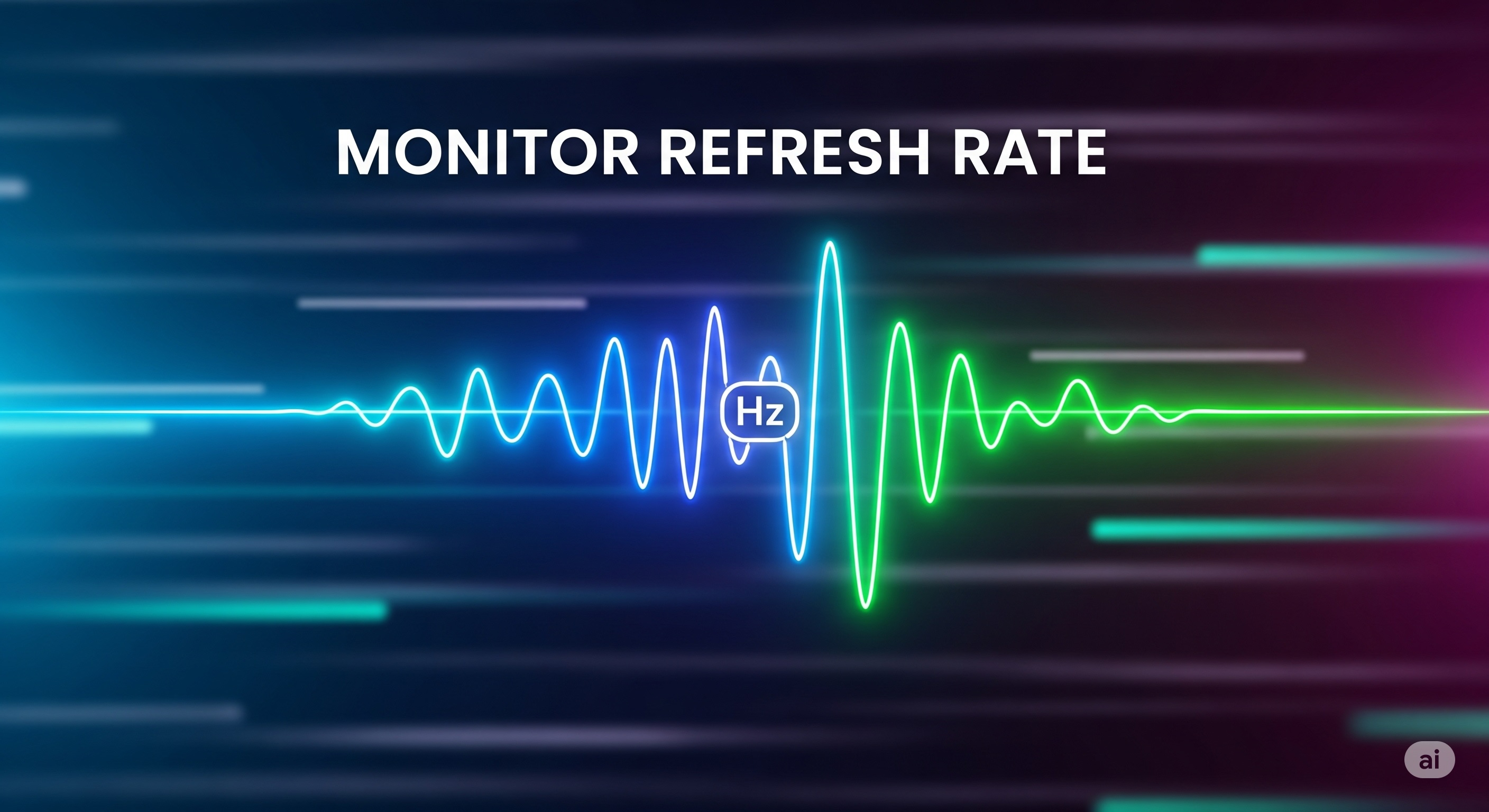What is Monitor Refresh Rate?
Monitor refresh rate, measured in Hertz (Hz), refers to how many times per second your display updates the image on its screen. Simply put, it dictates the smoothness of motion and transitions you perceive. For instance, a 60Hz monitor refreshes 60 times per second, while a 144Hz monitor refreshes 144 times.
Why Higher Refresh Rate Matters
A higher refresh rate means your monitor can update the picture more frequently and rapidly. This brings several significant advantages:
- Smoother Visual Experience: Especially in fast-moving scenes (like gaming or scrolling web pages), a high refresh rate drastically reduces stuttering and screen tearing, making transitions appear more fluid and natural.
- Reduced Motion Blur: The faster the screen updates, the less time a previous frame lingers on the screen, effectively minimizing motion blur and making fast-moving objects appear sharper.
- Competitive Gaming Advantage: For competitive gamers, a high refresh rate translates to quicker visual feedback. You can spot enemy movements earlier and react more swiftly, gaining a crucial edge in split-second engagements.
- Less Eye Strain: While not as immediately obvious, the smoother motion can reduce the strain on your eyes, potentially alleviating fatigue during long periods of computer use.
Common Refresh Rates and Their Applications
Monitor refresh rates vary widely, each catering to different use cases:
- 60Hz: This is the most common refresh rate, suitable for everyday office work, web browsing, and video consumption. For most non-competitive games, 60Hz provides a basic experience.
- 75Hz/100Hz: Offering a slight upgrade over 60Hz, these provide a marginally smoother experience and are often found in budget-friendly monitors.
- 120Hz/144Hz: These are the sweet spot for gaming monitors. They significantly enhance the gaming experience with much smoother visuals and are the go-to choice for most competitive gamers.
- 240Hz/360Hz+: Designed for professional esports players seeking the absolute pinnacle of competitive performance. At these ultra-high refresh rates, every single frame can make a difference.
How to Check and Adjust Your Monitor's Refresh Rate
You can check and adjust your monitor's refresh rate through your operating system settings:
- Windows: Right-click on desktop -> Display settings -> Advanced display settings -> Display adapter properties -> Monitor tab. Here you can select supported refresh rates.
- macOS: System Settings -> Displays -> Refresh Rate.
To visually experience the difference in refresh rates or to verify if your monitor is truly running at its advertised refresh rate, we highly recommend ScreenTestPro's UFO Test tool. It provides an animated demonstration that clearly shows the fluidity of motion and displays your detected refresh rate in real-time.
Refresh Rate vs. Response Time vs. Input Lag
While refresh rate is a key metric for monitor performance, it's not the only one. Equally important are:
- Response Time: This refers to how quickly a pixel can change from one color to another. Slow response times can lead to "ghosting," where fast-moving objects leave blurry trails. Learn more with our Response Time Test.
- Input Lag: This is the delay between your input (e.g., mouse click) and the corresponding action appearing on screen. Lower input lag means your actions are reflected more immediately. You can check yours with our Input Lag Test tool.
High refresh rates, low response times, and minimal input lag collectively contribute to a superior display performance, especially in gaming.
Conclusion
Monitor refresh rate is a core factor influencing your visual experience. Understanding and choosing the right refresh rate for your needs will significantly enhance your usage, whether for daily work, media consumption, or competitive gaming. Don't forget to utilize professional tools like ScreenTestPro to ensure your monitor performs at its best!
